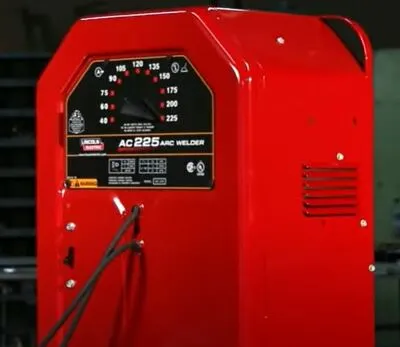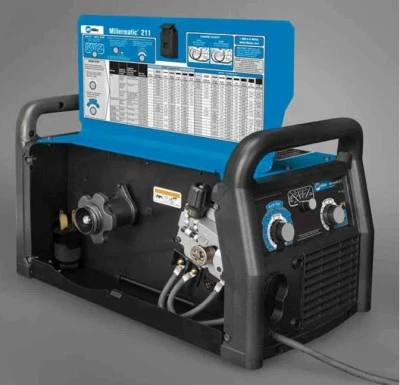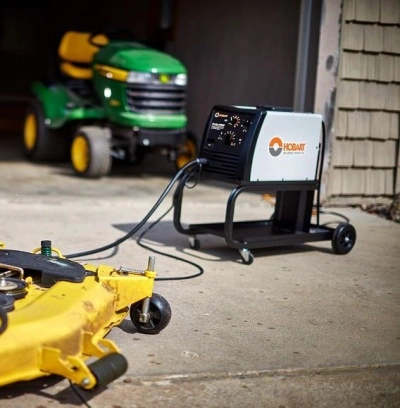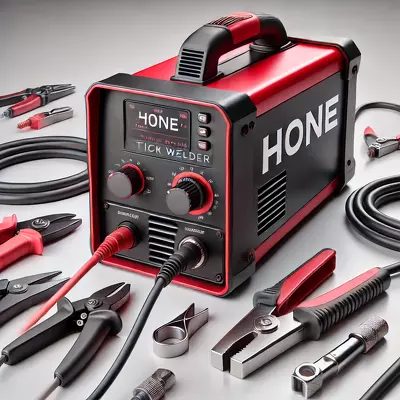S7 TIG Welder Review: Merging Tradition and Innovation in Modern Welding
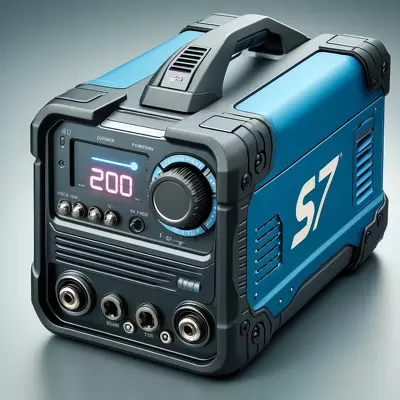
The S7 Tig Welder emerges as a significant contender in the precision welding market, offering an intriguing blend of power, versatility, and user-friendly features. This comprehensive review aims to dissect its capabilities and examine how it stands against industry benchmarks. With a focus on performance, ease of use, and durability, our insights will guide professionals and hobbyists alike in determining if the S7 is the optimal tool for their welding projects.
As an Amazon Associate, we earn a commission from qualifying purchases.
I. Introduction to the S7 Tig Welder Review
A. Overview of the S7 Tig Welder
The S7 Tig Welder, known for its robust performance and adaptability, is capturing the attention of welding enthusiasts and professionals alike. Designed to cater to a broad range of welding tasks, this machine combines state-of-the-art technology with user-friendly features, making it a noteworthy addition to any workshop.
B. Importance of Tig Welding in Modern Fabrication
TIG welding, with its precision and versatility, has become indispensable in today’s fabrication industries. From intricate art projects to heavy-duty industrial applications, the ability to create clean, strong welds is crucial. The S7 Tig Welder positions itself as a tool capable of meeting these diverse needs, promising both quality and efficiency.
C. Objective of the Review
This review aims to provide a thorough analysis of the S7 Tig Welder, highlighting its features, performance, and overall value to the user. Through comprehensive testing and evaluation, we seek to offer insights that will aid potential buyers in making an informed decision.
II. Unboxing the S7 Tig Welder
A. First Impressions and Build Quality
Upon unboxing the S7 Tig Welder, its solid construction and high-quality finish are immediately noticeable. The welder exudes a professional look, suggesting that it’s built to withstand the rigors of continuous use.
B. What’s in the Box?
Inside the package, users will find the welder itself, along with a TIG torch, ground clamp, and various accessories necessary for immediate operation. A detailed manual provides clear instructions for setup and use, ensuring a smooth start for users of all experience levels.
C. Initial Setup and Installation
Thanks to its intuitive design, setting up the S7 Tig Welder is straightforward. Connecting the TIG torch and ground clamp takes mere minutes, and the user-friendly interface allows for quick adjustments to welding parameters.
III. Features and Specifications
A. Key Features of the S7 Tig Welder
The S7 boasts features such as precise amperage control, post-flow control for better gas coverage, and a high-frequency start that eliminates the need to touch the workpiece, enhancing both safety and weld quality.
B. Technical Specifications
The welder’s power capability ranges from 5 to 200 amps, accommodating a wide variety of materials and thicknesses. Its dual voltage capability ensures versatility in different working environments, while a digital display facilitates precise control settings.
C. Comparing with Competitors
When compared to similar models in the market, the S7 stands out for its balance of price, performance, and reliability. It offers features often found in higher-priced models, making it a competitive option for both amateur and professional welders.
IV. Performance Evaluation
A. Welding Capabilities and Flexibility
The S7 Tig Welder excels in handling a diverse range of welding tasks. Whether working with thin sheets or thicker materials, the welder performs consistently, producing clean and strong welds with minimal effort.
B. Precision and Control
The precise control over welding parameters allows users to achieve optimal results on various projects. The high-frequency start and stable arc ensure superior weld quality, with reduced risk of contamination or weld defects.
C. Durability and Reliability Tests
Extended use in various conditions revealed that the S7 Tig Welder is built to last. Its reliable performance under continuous operation demonstrates its suitability for both hobbyist projects and more demanding industrial applications.
V. User Experience and Accessibility
A. Ease of Use for Beginners and Professionals
The S7 Tig Welder’s intuitive controls and comprehensive manual make it accessible to beginners, while its advanced features and performance will satisfy the demands of experienced welders.
B. Maintenance and Upkeep
Routine maintenance is simplified with easily accessible internal components and a clear guide on regular upkeep, ensuring the welder’s longevity and consistent performance.
C. Availability of Accessories and Parts
A wide range of compatible accessories and readily available replacement parts further enhance the user experience, allowing for customization and quick repairs when necessary.
VI. Pros and Cons
A. Advantages of Using the S7 Tig Welder
The S7 offers exceptional value, combining versatile welding capabilities, user-friendly design, and durable construction at a competitive price point.
B. Potential Drawbacks
One area for improvement is its weight, which may affect portability for some users. Additionally, while it excels in TIG welding, those seeking a multi-process welder might find its capabilities somewhat restricted.
VII. FAQs
Q: What types of metal can the S7 Tig Welder handle?
A: The S7 can weld various metals, including steel, stainless steel, and aluminum.
Q: Is the S7 suitable for beginners?
A: Yes, its user-friendly design and intuitive controls make it accessible to beginners while still offering the precision and control demanded by professionals.
Q: Can the S7 operate on both 110V and 220V power supplies?
A: Yes, the welder’s dual voltage capability allows it to operate on both 110V and 220V, making it versatile for different working environments.
Q: How does the high-frequency start benefit welding?
A: The high-frequency start allows for a touchless arc start, reducing the risk of contamination and providing a cleaner, more stable weld.
Q: What is the maximum thickness the S7 can weld?
A: The welder can handle materials up to a certain thickness, which varies depending on the metal type and welding conditions, typically up to 3/8 inch for steel with proper preparation.
Q: Are accessories for the S7 Tig Welder readily available?
A: Yes, a wide range of accessories and replacement parts are available, ensuring users can easily customize or repair their welders as needed.
Q: Does the S7 come with a warranty?
A: Yes, it comes with a manufacturer’s warranty, the details of which are included in the product documentation. This provides additional peace of mind to buyers.
VIII. Conclusion
A. Review Summary
The S7 Tig Welder is a compelling option for both novices and seasoned welders. It offers a blend of performance, ease of use, and durability. Its ability to deliver high-quality welds across a range of materials and thicknesses, combined with a competitive price point, makes it a standout choice in its category.
B. Best Alternative
For those considering alternatives, the AHP AlphaTIG 200X is a similar product that offers comparable features and flexibility. It also enjoys positive reviews for its reliability and performance, making it another excellent option for users seeking quality TIG welding solutions.
IX. Suggested Readings
Before diving into your next welding project or making a decision to purchase a new welder, consider expanding your knowledge with some relevant literature. These books not only provide deeper insights into welding techniques and technologies but also offer valuable tips and advice for both beginners and experienced welders.
- “Welding For Dummies” by Steven Robert Farnsworth: This accessible guide breaks down the basics of welding, offering clear explanations and practical advice for getting started.
- “The Welder’s Handbook: A Complete Guide to MIG, TIG, Arc & Oxyacetylene Welding” by Richard Finch: Finch’s comprehensive manual covers various welding methods, providing detailed instructions and expert tips for welders of all levels.
- “Modern Welding Technology” by Howard B. Cary: Cary’s book delves into the scientific and technical aspects of welding, making it an invaluable resource for those looking to deepen their understanding of the craft.
- “Metals and How To Weld Them” by T. B. Jefferson and Gorham Woods: This classic text offers an in-depth look at the properties of different metals and the best practices for welding them, serving as a crucial reference for professional welders.
Expanding your library with these titles will enhance your theoretical knowledge and improve your practical skills, allowing you to tackle a wider range of projects with confidence. Whether you’re just starting in welding or looking to refine your techniques, these resources can provide the guidance and insights needed to achieve superior results.

